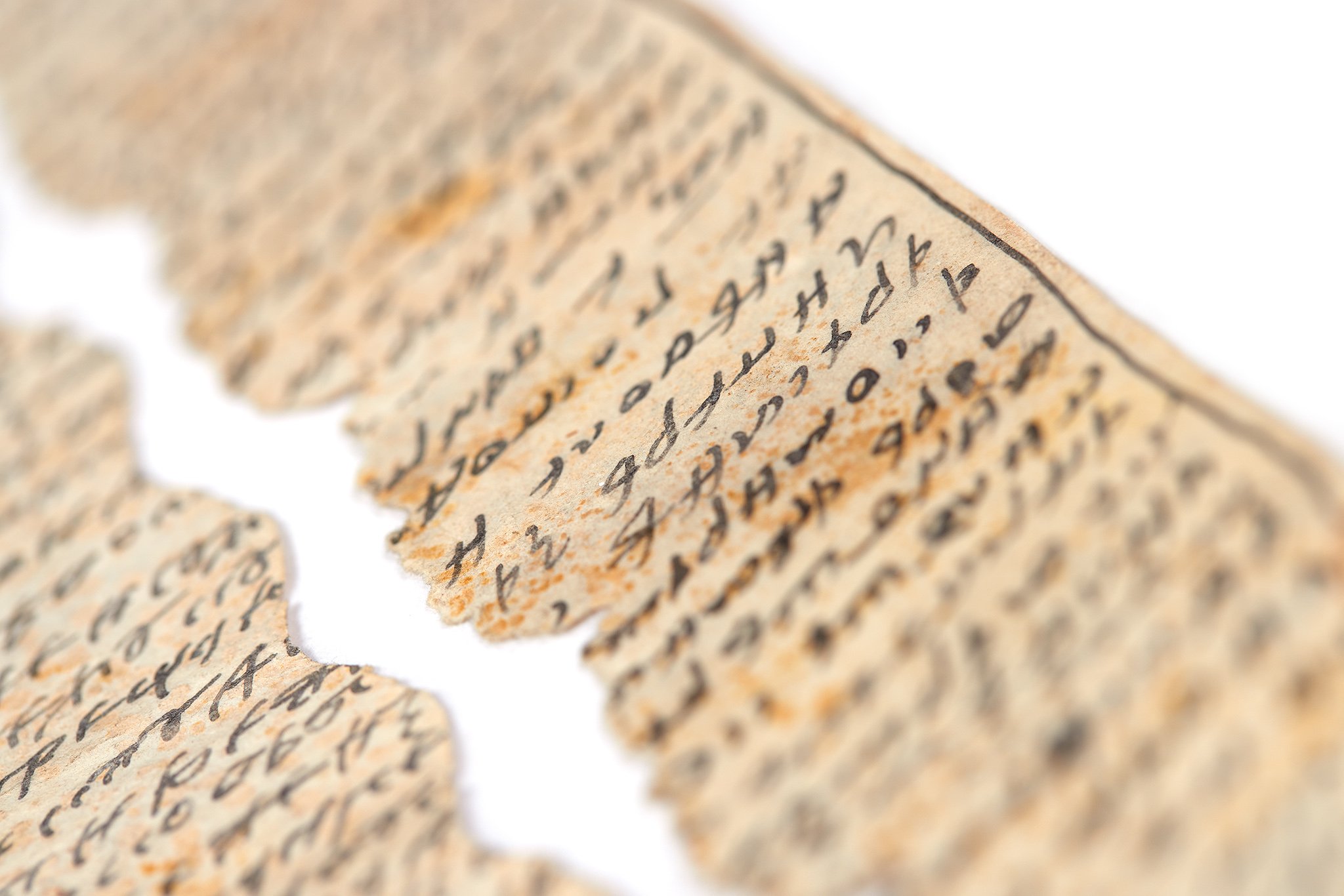
THE RECORD OF KUNOVO: BOSNIAN CHURCH AND FIRST MUSLIMS
Author: Prof. Aida Abadžić Hodžić, PhD, Faculty of Philosophy of University of Sarajevo • Illustration: Kunov record • Source: National Museum

In the early 1970s, Muhamed Hadžijahić referred to the so-called Record of Kunovo as an interesting example of syncretic elements in Islam in Bosnia and Herzegovina, which lingered longest among people and in folk customs and beliefs.
It is a record which dates back to the 16th century and which was discovered in the village of Ječmište, above the village of Kunovo (municipality of Foča) in 1905. The record was written on three pieces of paper, each eight centimeter wide and about 44 centimeter long, sewn to each other and wrapped in an oilcloth, which was then put in a pine log, which was in turn buried two meters deep into the ground. This pine log was discovered more than a hundred years ago, when villagers dug earth for the construction of a new mill. The record was sent to the National Museum, where it is still stored.
It is a magic record, with quotations from the New Testament, which was highly admired by members of the Bosnian Church, though also with a lot of apocryphal elements, which was intended to protect the homestead of Kunovo from natural disasters (thunderbolts, hail, cold, evil winds etc.). In the part of the record which remained readable, there is a list of names of twenty-nine families who should be protected. They also include Muslim names: Hasan, Bajazit, Mustafa, Daut, Ferhat, Jakub etc.
Furthermore, Bosnian Muslims (like other South Slav peoples) partly inherited from Bogomils their magic as well. A typical example of it is the so-called Record of Kunovo, which was written for newly islamized Bosnians by a monk of Bosnian Church in and about 1560-1565, and possibly even later. The purpose of the record was to suppress devilish powers which cause harm such as thunderbolt, evil hail, dry wind and freezing rain. The text, written in Bosančica script, and partly in Latin, lists 29, and perhaps even more, Muslim names whose property should be protected. (Hadžijahić, 1980, 325).
The first review of this discovery already, published in the Bulletin of the National Museum of 1. 7. 1906, pointed out:
Since the village it refers to is Muslim, it should be assumed that the record would be written in Turkish script and issued by a hoja; however, it is not, but it was written in Bosančica and, judging by a part of it which has a Latin text, certainly by a Catholic priest. This Latin text is perhaps the most interesting part, since we find in it a rare case that in Bosnia Bosančica is used for writing Latin texts.
A Turkish defter (register) from 1477/1478 mentions gost (wandering monk of Bosnian Curch) Cvjetko in Kunovo. The data that an authentic text was composed as late as a century after Turkish conquest testifies that the Bosnian Church survived in Bosnia even after 1463. Therefore, the Record of Kunovo is a precious testimony of the encounter between Islam and the Bosnian Church on Bosnian soil, which is interesting and unique both by its form and its content. The cultural-historical significance of this record is also revealed in the confirmation of continuity of medieval Bosnian literacy and a distinctive linguistic expression.
References
Muhamed Hadžijahić, „Sinkretistički elementi u islamu u Bosni i Hercegovini“, POF, vol. XXVIII/XXIX, Oriental Institute in Sarajevo, 1980, 301-329.
Muhamed Hadžijahić, „O jednom manje poznatom domaćem vrelu za proučavanje Crkve bosanske“, Prilozi, year. X/2, Institute for History, Sarajevo, 1974, pp. 55-109.

